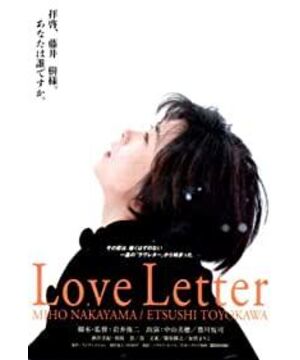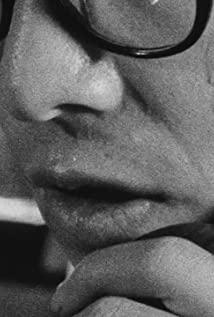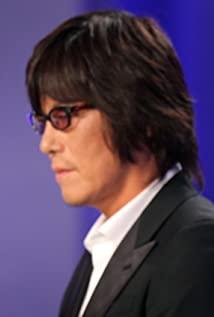"Love Letter": A love epic poem that can be copied by countless people. Two people with the same name and the same surname, a piece of unforgettable love, Iwai Shunji's "Love Letter" played a love epic tactfully and movingly. For Iwai Shunji himself, "Love Letter" is his most representative work, but for the entire Japanese film, it plays an important role in connecting the past and the future: Iwai Shunji scattered and stripped the center of the story, and placed them in the story. In each stage, the story is connected with a large number of details, so that the details promote the development of the story, thus creating a melodious and moving narrative rhythm like music. This is a great innovation of Japanese pure love movies. It is also "Love Letter". "The greatest wealth left to future generations. Hiroko is just a bystander of the story, and the real theme of the story happened to the two Fujii trees. This narrative technique of using the memory of bystanders to flash back the theme of the story is not uncommon in Japanese movies, but such as "Love Letter". "Generally, the main body of the whole story is placed in flashbacks, and there are not many people who use bystanders to lead the story. The love between the two Fujii trees designed by Shunji Iwai is not new, but what is new is that through the correspondence between the male Fujii's fiancée and the female Fujii's, the two people's first love that was born in the youth is slowly revealed, which is more natural and natural. , shy and ignorant. The story is naturally cut into several parts by Hiroko's memories. From the beginning, Hiroko knew nothing about Fujii, and later slowly revealed the budding of Fujii's love in his student days. The details of life are presented one by one and become a complete story. Compared with the complete narrative line, "Love Letter" places the separated clues in the fragments of memory, from the graduation album where the address was found at the beginning, to the English test paper with only 27 points, and finally to the discovery of the book in the book. Like a library card, all clues are presented to the viewer in a very clear and natural context, and the fate of Hiroko and the female Fujii Tree is also hidden in the excavation of this story. The effect is to make modern people better understand the past love. Hiroko's life is monotonous and boring. Before she learned about Fujii's past, she always reported unknown curiosity to her dead fiancé, and her nostalgia for Ashu also made her unable to accept Chiba, who had a good impression of herself; The female tree has always lived in loneliness. Apart from her repeated work, she has no enthusiasm or memory for life, and she is also plain and indifferent to the people around her. The discovery of this love opens up a different life for them: Hiroko has found new happiness, she has washed away the memories and ambiguities of Ashu in her heart, while the female Fujii Shu has found memorable memories, her love for life The nostalgia of the family and the attachment to the family deepened. So, in this excavated memory, Hiroko, who once loved Fujiishu, and Ashu, a woman who was once loved by Fujiishu, both got the happiness they deserved. It can also be said that it was the dead male Fujiishu. legacy to them. Shunji Iwai's performance of details has opened a new chapter in Japanese love movies, which is also the greatest significance of "Love Letter". In the original story system, like "Love Letter", there are not many settings with dual protagonists, but Shunji Iwai ingeniously put Nakayama Miho in two different roles, using a dead person to string together A vivid story; at the same time, he has piled up a large number of detailed descriptions, such as test papers, such as graduation manuals, such as runways, which are inscribed with youth memories, and only shine in the story again and again, moving the audience. As the author mentioned in the previous discussion of "Calling Love in the Center of the World", although the weakness of the story is not replaced by the richness of details, to a certain extent, the richness of details makes the audience's attention shift to the core of the story. Come up, but in terms of the root cause, this is just a method of treating the symptoms rather than the root cause. With concepts and details, it can only fool the audience for a while but not forever. The greatest contribution of "Love Letter" is not in its details, but in its perfect combination of stories and details, which is the most important point for it to surpass all predecessors and lead the latecomers. The description of love in "Love Letter" is delicate and gentle, but in addition to love, "Love Letter" also vividly interprets the echo of love to life and family affection. Although these two restrict each other, they are not contradictory: the female Fujii tree has no hope for love, which makes her full of indifference to life and family, but when she slowly finds love in the pile of books she remembers When I traced the trail, I slowly felt the warmth of the people around me: Grandpa's conservativeness does not mean a regression, but a symbol of care and tolerance; Bozi also sent his memory of Ashu in his call to the distant mountains. , from now on, she can really feel at ease to find her port of call. What Shunji Iwai shows in "Love Letter" is his very dynamic story creation ability, as well as his soft and soothing camera language like a movement. In the play, Fujii Tree leans against the window and reads a book. When the wind blows suddenly, the white curtain brushes on Fujii's face, which represents the budding love heart of the girl at that time. Shunji Iwai's lens language is by no means contrived, but carefully implanted in the context of the story at that time. The reason why the story of "Love Letter" can move many people comes from the deconstruction of love in the story, but it caters everywhere. Everyone has a "Love Letter" in his heart, and everyone can read it from the "Love Letter". To their first love, everyone can find their own perception of love from the "Love Letter". Although the story is only a short two hours, the "Love Letter" in real life is constantly being staged every day, an immortal work whose concept can be infinitely copied in any era.
View more about Love Letter reviews











